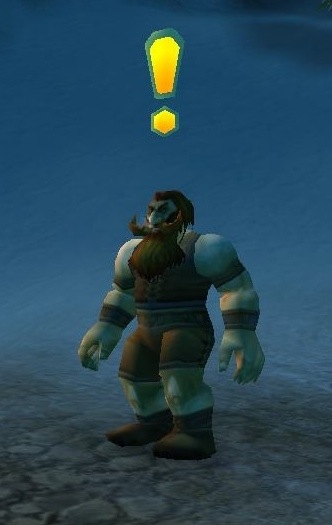Side Quests Are Lazy. There, I said it.
The side quest is a venerable RPG staple. It's an excursion off the main plot that is supposed to provide an opportunity for players to dig deeper into a story, or investigate something interesting. Side quests and side encounters are provided in published modules to give the DM some flexibility in running an adventure where more encounters might be desirable.

For a home game, a discerning DM should strive for a little bit more.
D&D is a game about heroic adventure. The players should be in a story where they play the roles of powerful heroes who face great danger and save the day. Every challenge presented by the adventure should reinforce this. "Traditional" side quests don't pass this test, because they often fall into a few different variations of the fetch quest and by their design are intended to be optional. Optional isn't heroic. Fetching isn't fantasy. Running an errand isn't an adventure.
It's a cliche, but "getting more than you bargained for" is pretty much the very definition of adventure. Luring the players in with the promise of dealing with a troublesome enemy, sought-after loot, or quirky character interaction is standard fare. After the appetizer that is the "main" mission of the side-trek, you can spring a surprise or complication that ties into main objectives. Players really like "discovering" secret motivations and hidden enemies. Springing complications on them allows them to make meaningful choices and take ownership of the story.
Here are a couple of side quest complications that pass the heroic storytelling test and keep your game on track
The simple mission that goes wrong: Players are heroes who can vanquish just about any enemy and overcome just about any obstacle. They're used to winning. A fun twist on the standard side mission is when the objective is missing or ends up being more trouble than it's worth. Maybe a setup, maybe a mistake, maybe someone else got there first. Whether the party talks their way out, fights their way out, or sneaks their way around, getting out of trouble can introduce hooks to the next main quest - the players will feel like they had quite an impact on the world wh
A rescue that turns into an escort mission Players who make the "side-trek" to rescue innocents from peril instinctively form a connection to them. Maybe a caravan's armed guard was killed in an attack, or the ranger broke his leg and needs to be taken back to his outpost. If you have the rescued npcs "on their way" to a player objective, you have all the benefits of a palate-cleansing side quest without causing your story to grind to a halt. New companions are always a good investment for a discerning DM - they always pay off later!
The Loot That Should Not Be Players love loot. Hoo-boy do they ever. So what if they find something Terrible in the basement where they're cleaning out the rats? Maybe something that leads them right into your Main Plot? Yes. Yes indeed.
"You break it, you buy it" If you have players who like to kick doors down and roll initiative, adding consequences to these actions and sticking to them will not only bring about interesting roleplaying and plot opportunities, but will also up the stakes for future situations down the road. Players love when their PC's actions change the game world - that's what interactive storytelling is all about. Let those chickens come home to roost! Have the constable come down to the Battered Scabbard after the bar brawl. Better yet, have the Evil Constable come down. You know, the one who is involved in your main plot?
Making the game exciting and fun for your players doesn't have to be this huge mega plot with railroad tracks. You can do side quests to show variety, but at the same time hook them in for more. They'll feel powerful and clever, and come back for more. Isn't that the whole point?
And nobody had to fetch anything.